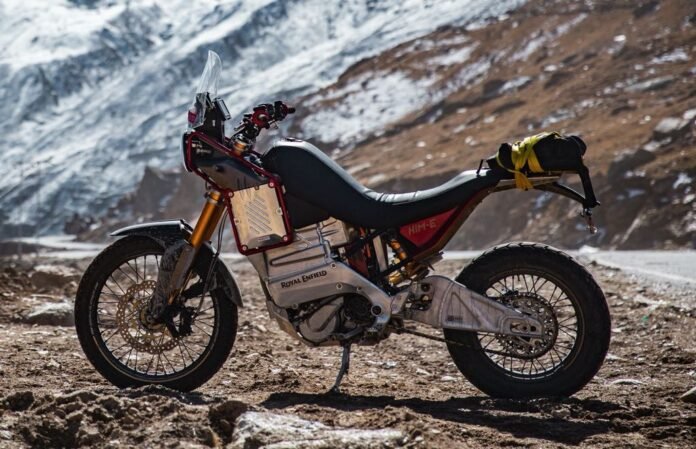The brand-new Himalayan 452 was Royal Enfield’s main announcement at EICMA 2023, but they also gave a significant clue about the brand’s electric future. They unveiled the Electric Himalayan Test Bed during the same press conference.
Royal Enfield made it very evident that this is neither a production-ready motorcycle nor an all-show, no-go concept bike. As the name implies, it is a test bed for creating an electric drivetrain for use in future models, not just the Himalayan. The architecture of the Himalayan is utilized in this regard.
However, creating and testing it in the real Himalayas is not only smart business, but it also serves as a fantastic test for the new drivetrain in some of the world’s most demanding environments. Since there is no combustion involved, the thin air won’t impact its performance, but road bikes will also benefit from an electric drive system that can withstand the rigours of the trails. Its implementation in other models will be equally sturdy because it was developed to withstand the demands of an adventure bike.

Details of the Royal Enfield Himalayan electric bike
Few details about the bike itself were released by Royal Enfield, save than its existence. This makes sense because the platform is still in active development and its performance metrics are always shifting. A little clip of the Electric Himalayan Test Bed in operation that they played had a regular Level 2 charger hooked into what seems to be the top of a gas tank. It isn’t actually a petrol tank, of course, but it is probably where most of the electronics that power this bike are located.
It’s obvious that the bike on the EICMA floor wasn’t cleaned up before the performance. Like many of us, it proudly displays its dirt as a badge of pride for enduring challenging riding conditions. Royal Enfield comprehends. Marco Alvisi, Chief Growth Officer of EV, mentioned during the press conference that they want you to be able to hear the towns you drive through, the rivers you cross, and the wind through the trees—things that are impossible to do when a gas engine is roaring loudly in your ears—in addition to promoting sustainability.


